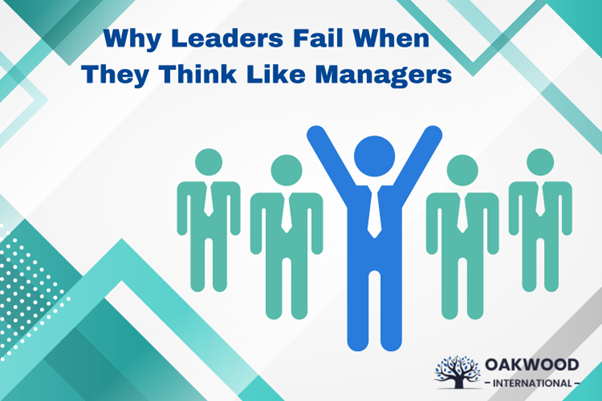What if the way you’ve been leading your team is holding them back? Many leaders unknowingly approach their role with a managerial mindset, focused on control and order rather than inspiring and guiding. The difference between leadership and management isn’t just a matter of job titles; it’s about mindset.
For those aiming for growth in leadership roles, like those pursuing CMI Level 5 qualifications, understanding the differences between Leadership vs Management is key. If you’re stuck in the weeds of daily tasks and micromanagement, it’s time to rethink your approach and embrace true leadership. Let’s explore the key differences and why shifting from a managerial to a leadership mindset is crucial for success.
Table of Contents
- Understanding the Key Differences Between Leadership and Management
- The Consequences of a Managerial Mindset in Leadership
- How to Shift from a Managerial to a Leadership Mindset
- Conclusion
Understanding the Key Differences Between Leadership and Management
Clarifying the differences between management and leadership will help one understand why thinking like a manager might impede leadership. Maintaining order and ensuring procedures are carried out are top priorities for managers. They are good at organisation, resource management, and ensuring the team meets its targets. However, leadership is more about motivating and guiding people towards a shared vision.
Whereas management is about “doing things right,” leadership is about “doing the right things.” While managers typically concentrate on stability, predictability, and executing prescribed procedures, effective leaders embrace change, challenge the status quo, and inspire creativity.
The Consequences of a Managerial Mindset in Leadership
Leaders who think like managers may adopt a top-down approach to decision-making, which can create a rift between them and their team, eroding trust and engagement. Here’s how a managerial mindset can negatively affect leadership:
- Restricted Innovation: A managerial style focuses on following accepted methods and procedures. While this ensures consistency, it can stifle growth by limiting creativity. Conversely, leaders should inspire their teams to explore new ideas and take creative risks.
- Lack of Inclusiveness: Operating with a managerial mindset often leads to decision-making without considering the team’s input. This can leave employees feeling disengaged if their contributions are undervalued. Great leaders actively listen, offer constructive feedback, and empower teams to foster strong, collaborative relationships.
- Short-Term Focus: Managers tend to concentrate on short-term goals and immediate results necessary for day-to-day operations. However, leaders must balance these with long-term goals to give their teams a broader vision. Leaders motivate employees to strive for something more extraordinary by connecting everyday tasks to more significant objectives.
- Communication Styles: While management and leadership rely on communication, their approaches vary. Leaders prioritise open, transparent communication that aligns the team with a larger vision. Managers may focus more on task-based communication, giving instructions without encouraging dialogue.
How to Shift from a Managerial to a Leadership Mindset
Shifting from a managerial to a leadership mindset takes time and conscious effort. Leaders can make this change in the following ways:
- Embrace Emotional Intelligence: Leaders must develop emotional intelligence—understanding and managing their own emotions while being attuned to the feelings of others. This builds trust and helps create closer connections with team members, boosting morale and loyalty.
- Encourage Innovation and Risk-Taking: Leaders must create a culture that encourages innovation and allows for calculated risks. This can feel uncomfortable for those with a managerial mindset, but it’s essential for staying competitive in today’s world. Leaders should celebrate mistakes as learning opportunities, motivating their teams to push boundaries.
- Focus on Long-Term Goals: Leaders should help their teams see the bigger picture beyond daily tasks. By aligning daily actions with the broader organisational objectives, leaders inspire a growth mindset and motivate employees to work toward long-term goals.
- Build Relationships: Effective leadership extends beyond task completion—it’s about fostering strong relationships with team members. Building trust starts with genuinely getting to know team members, showing empathy, and offering regular feedback.
Conclusion
Leadership requires a mindset that goes beyond managing tasks. It’s about motivating, inspiring, and guiding a team towards a shared vision. When leaders adopt a managerial mindset, they limit their potential and that of their team. For a deeper dive into leadership principles, consider seeking guidance from Oakwood International to enhance your expertise.
Also Read: NJ Leadership Program opens applications for 2025 Summer Fellowship






